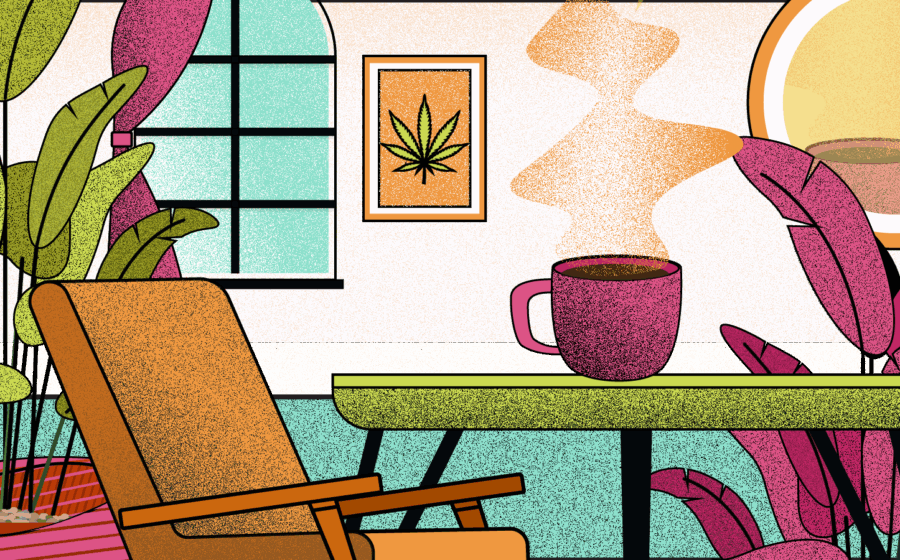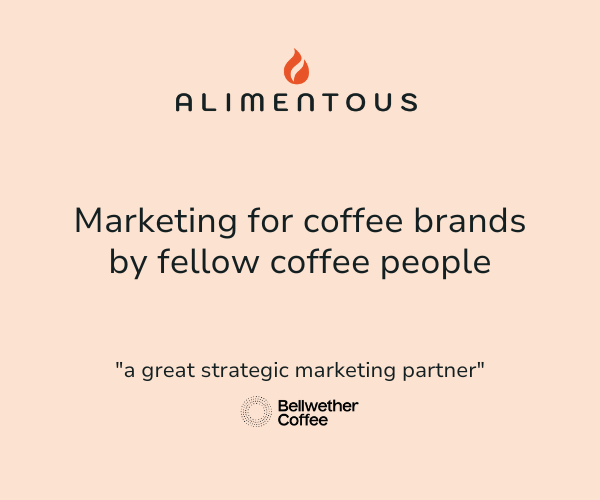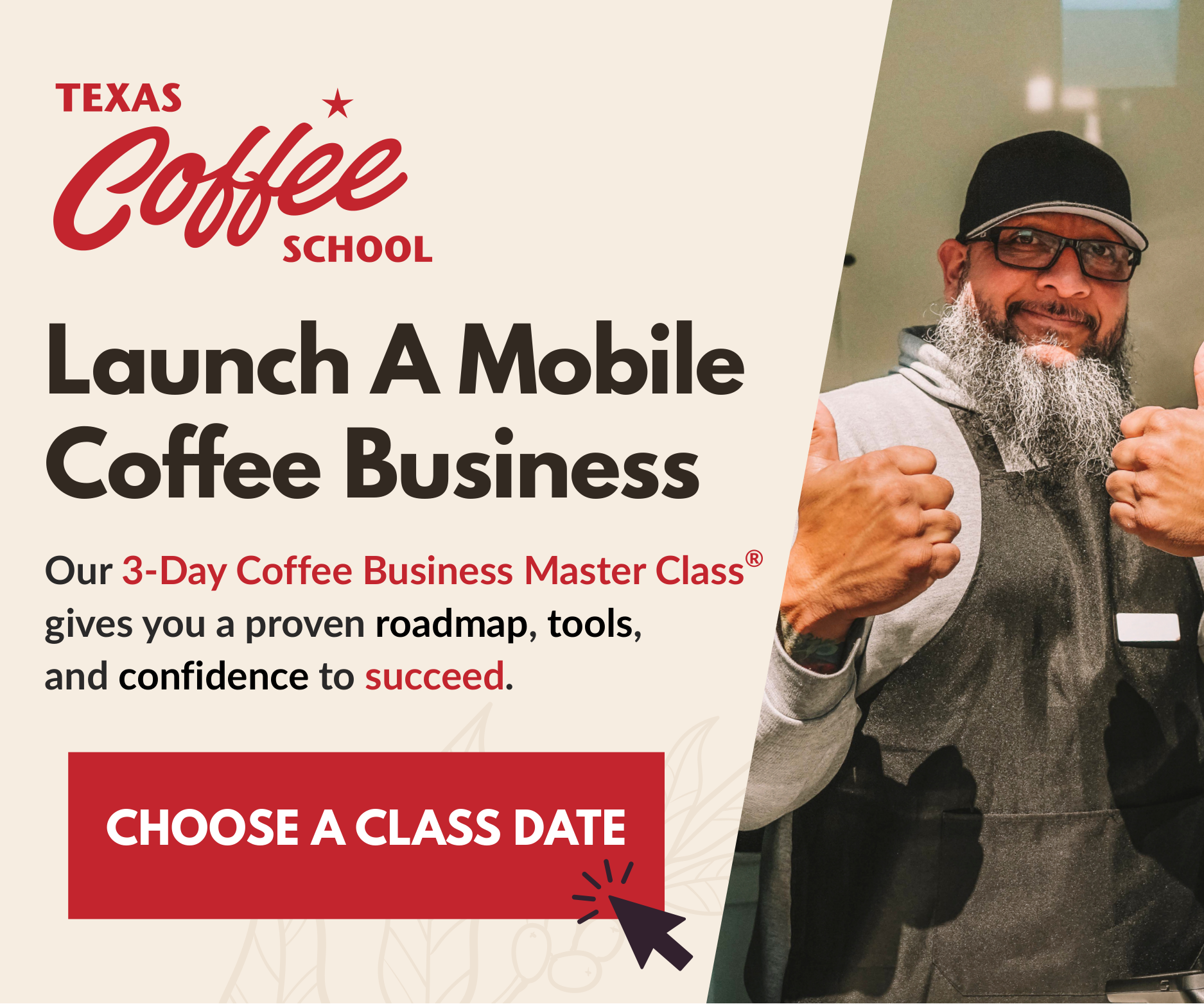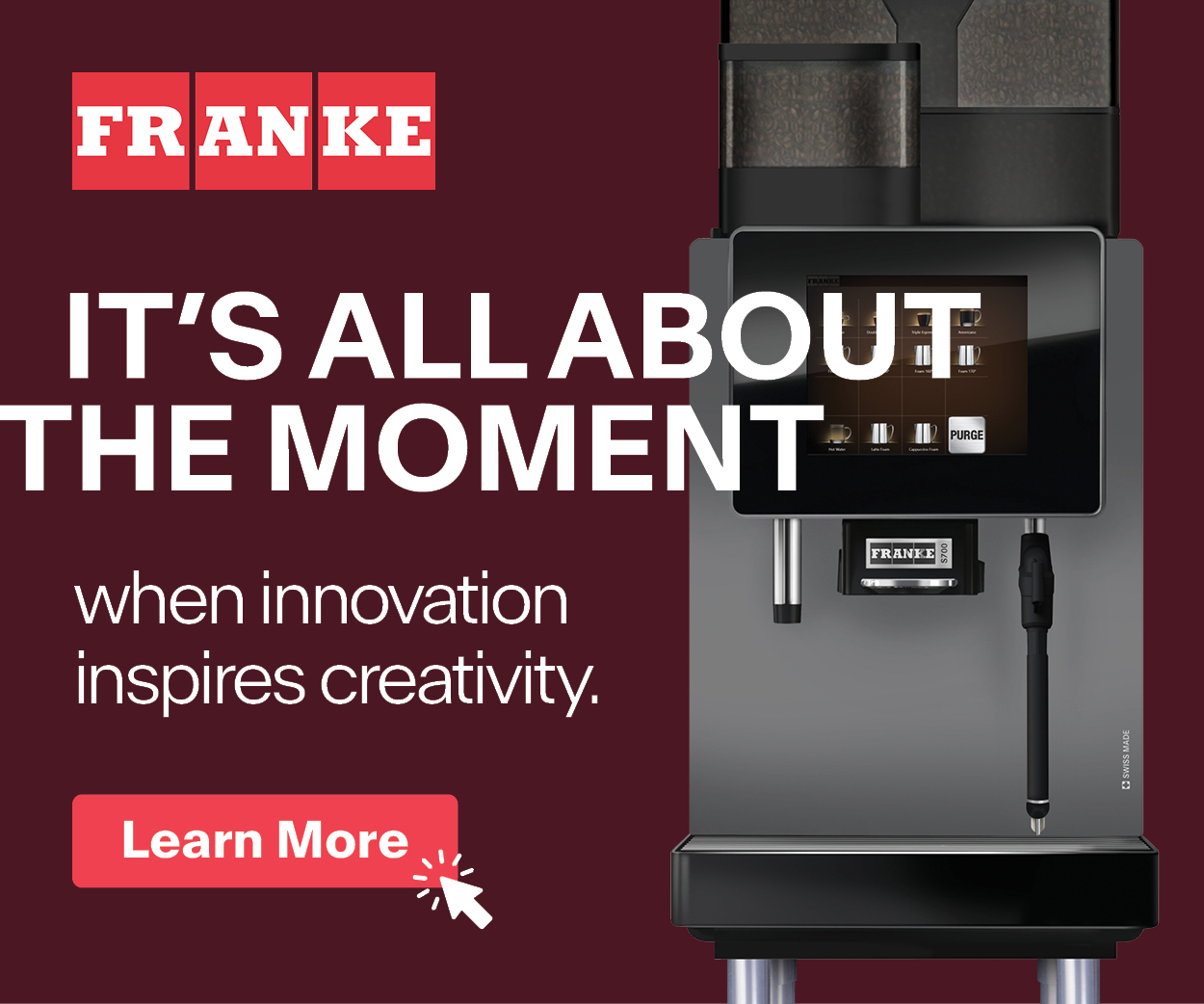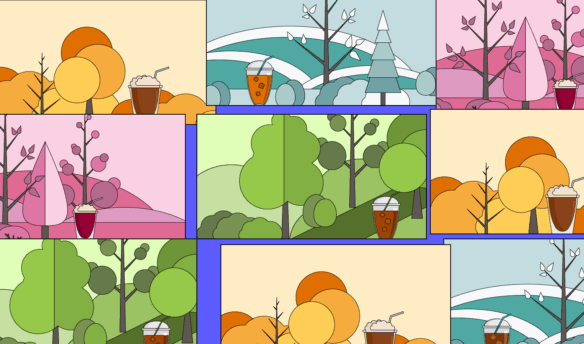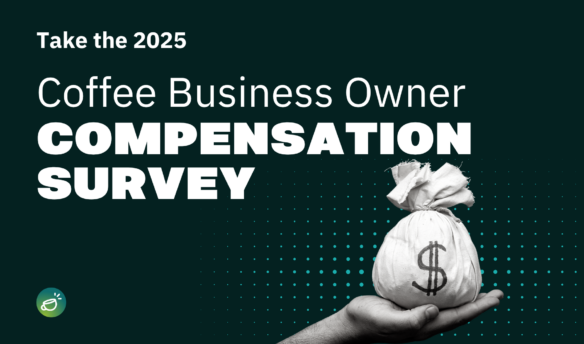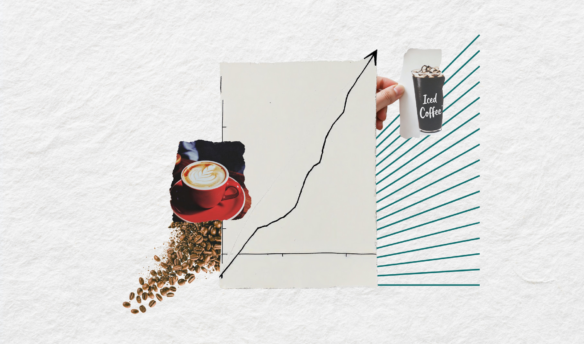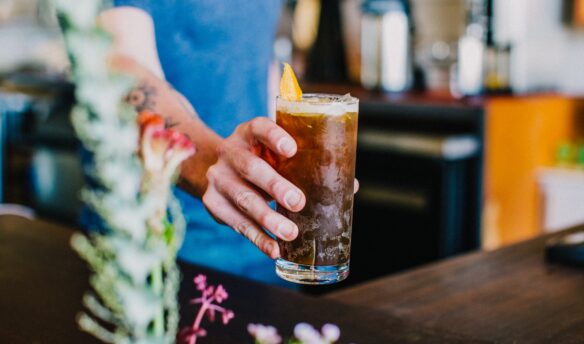Nicole Brown is a self-described “expert-level caffeine user.” She drinks four to five cups of coffee each day. “Coffee is a critical part of my daily routine,” the innovation consultant says of her life in New York City. Sometimes, she’s jokingly chastised by her local barista if she doesn’t show up when expected.
But Brown also enjoys hemp-derived beverages, sometimes called cannabis beverages, and remembers when shops in New York began adding cannabidiol, or CBD, to drinks.
“My first exposure to CBD was about six years ago, when every coffee shop in NYC advertised adding it to your coffee for $3,” Brown says. CBD is a non-psychoactive compound in the cannabis plant known to induce relaxation; it can be consumed alone or in combination with the psychoactive compound tetrahydrocannabinol (better known as THC).
As Brown recalls, the CBD drinks of that era were made by squeezing a few drops of tincture into the coffee, leaving its surface slick with oil. Though Brown liked the effects CBD had on her, she also remembers feeling confused about the mode of consumption. “Is this the experience we’re going for here?” she wondered at the time. “Like, is this good?”
In the U.S., the 2018 Farm Bill allowed for the commercial sale of low-dose CBD and THC products derived from hemp. However, it also created an environment where the growing hemp industry operates alongside—and in conflict with—the state-regulated cannabis market. Even as CBD hit coffee shop menus, it wasn’t very well-known or regulated, and some lawmakers and cannabis industry folks feel regulation is still lacking.
But we’ve come a long way since 2018. Today, 24 states, two U.S. territories, and Washington D.C. have legalized recreational cannabis use, while 7 states have decriminalized cannabis. Globally, legal cannabis sales totaled $36 billion in 2023; $29.5 billion of which was attributed to U.S. consumers. In the same year, global sales of cannabis beverages reached $2.04 billion, a figure that’s projected to grow exponentially year-on-year, largely driven by the U.S. market.
As a result, although “going for a coffee” has always evoked associations with leisure time, hemp-derived beverages are starting to change how people get their buzz.
The State of the Union: Cannabis Beverages Edition
Since Ellen Scanlon weaned herself off caffeine, she’s started making “sort of a fake coffee” by mixing dandelion powder with hot water, milk, and cinnamon. “I love the ritual, but caffeine itself is just too strong for me,” she says. “People always laugh because they’re like, ‘Wait, you work in weed.’”
Scanlon is an advocate for safe, legal cannabis use and the host of How to Do the Pot, an award-winning podcast “that helps women feel confident about cannabis.” Alongside listener stories about the first time they bought legal weed, Scanlon covers the connections between cannabis and topics like menopause, AIDS, and productivity. “The podcast exists to provide women a space to learn about something that is becoming legal across the country but is not as simple as it might seem,” she says.
As part of the show’s mission, Scanlon addresses gendered elements of cannabis use; her listenership skews 50–70% women depending on the topic. She’s found that low-dose cannabis drinks are making the historically male-dominated culture more accessible to women, who prefer them over other ways of consuming THC or CBD. Whereas smoking, vaping, or eating an edible can cause an hours-long high, cannabis drinks can be dosed for shorter, less intense experiences.
The growing popularity of such beverages is currently driven by state-level regulations, according to Brown, who has analyzed cannabis trends as part of her work. (Scanlon interviewed Brown in a How to Do the Pot episode called “The Low-Dose Revolution: Rethinking What It Means to Get High.”)
“Depending on what state you’re in, there may be more [or fewer] opportunities for hemp-derived products,” Brown tells Fresh Cup. This means that just because a state allows cannabis sales doesn’t necessarily mean hemp-derived beverages are available, and vice versa. For example, states with legal cannabis programs including California, Colorado, and Washington don’t allow the sale of hemp beverages because they compete with cannabis dispensaries.
Conversely, states like North Carolina, South Carolina, and Texas—which haven’t legalized recreational cannabis use—allow the sale of hemp-derived beverages at wine and spirits shops and independent grocers.
Brown says the 2016 launch of White Claw had an outsized impact on the way people think about leisure-time drinks. White Claw, a ready-to-drink (RTD) hard seltzer, inspired other alcoholic soft drinks, which in turn paved the way for beverages with functional ingredients like lion’s mane mushrooms and CBD.
“It’s coming at a time when people”—especially younger generations—“are reconsidering their relationship with alcohol. Liquor industry mainstays are being upended by these low-dose drinks,” says Scanlon, who often subs in cannabis seltzers like Cycling Frog during occasions when alcoholic drinks are common.
Today’s cannabis beverages are a far cry from Brown’s first CBD coffee with oil just squeezed over the top. Turns out Brown was right; that’s not the optimal way to mix coffee and CBD from the perspective of taste, texture, or effect.
After that experience, Brown helped found Open Book Extracts, where she developed cannabis products. “In the last five years, we’ve seen a lot of the technological advancements that it takes to create a great beverage,” she says. The advancements involve emulsions and nano-emulsions that support the infusion of cannabis oil into water-based substances like coffee. “It’s one of the most exciting categories in the industry right now.”
The Draw of Hemp-Derived Beverages
The primary draw of low-dose cannabis drinks is relaxation and stress relief, but the beverage format is shifting cannabis stereotypes in the process. “We often associate getting stoned with eating potato chips on the couch, but cannabis drinks can lend themselves to productivity,” Brown says. They are also a discreet way to enjoy cannabis.
Consumers can choose from various formulations to tailor their experience. “THC, like caffeine, has an energizing, uplifting effect,” says Scanlon. Combining the two in certain proportions, however, can add new dimensions. “By adding more CBD, I can balance the head effects of creativity with a calmer body,” she adds.
Many consumers enjoy pairing cannabis with coffee and tea. Some brands have developed specialized products to sell through dispensaries, liquor stores, and home delivery services. These include Workman’s Relief’s cannabis-infused coffee and Kikoko’s cannabis-infused herbal teas; the latter brand offers formulations to “support [goals like] sleep, calm, libido, focus,” according to its website.
Still, while RTD coffee beverages are ubiquitous today, RTD cannabis coffee is less so. In lieu of those products, some consumers are opting to add a THC/CBD emulsion like Wims, a portable packet that can be flavored or unflavored, into their drink of choice. Like with caffeine, consumers don’t need to drink a lot to feel the effects of a cannabis beverage, which Scanlon says can start within 15–20 minutes of consuming. This doesn’t have to be intimidating, she says. “No one starts with a [large black coffee]. You start by putting some milk in to see how it affects you.” In the same way, “you can drink half a THC beverage, hang around with friends, and see if you want more.”
This accessibility, says Brown, encourages consumers to “create the occasion” for cannabis drinks—the way they always have with alcoholic and caffeinated beverages. “People are starting to incorporate THC into their exercise routines, taking a small dose before a run or a yoga class,” she says. As mentioned in How to Do the Pot’s series on alcohol and cannabis, some women are even redefining traditional celebrations like bridal showers with cannabis drinks.
Can Cafes Harness the Popularity of Cannabis Drinks?
After the 2018 Farm Bill greenlit hemp-derived products, U.S. cafes and bars moved fast to incorporate CBD into their offerings without knowing whether the trend would last. The COVID-19 pandemic further encouraged cafes to pivot towards new experiences. Now, the accessibility of cannabis drinks make them a compelling option. But is it viable?
“I’m not sure if there’s room in the coffee shop for this, but it has potential,” says Brown. “I see it more in the all-day cafe that also serves beer and wine. Ultimately, it could be part of a cocktail hour.” Cafes wanting to offer cannabis products would need to consider safety and age-gating, like adding systems to check IDs and verify licenses. “The category does need guardrails, and it’s harder to do in a coffee shop,” she adds.
Retailers are also dependent on clear guidelines from individual states, whose approaches to cannabis vary, as well as the federal government. The Biden administration supported recategorizing cannabis from a high-risk Schedule I drug to a lower-risk Schedule III drug, but this wasn’t finalized before Trump entered office.
“Since the 2024 election, the hemp-derived cannabis beverage space has taken off, yet the legal landscape is messier than ever,” Scanlon says. Although the Farm Bill was temporarily renewed in 2024, Congress is debating amendments specific to hemp use. “Until there is federal guidance, the industry is dealing with a confusing patchwork that makes it harder for consumers and businesses to move forward with confidence,” she says.
For now, Scanlon will be watching the situation with interest. Thousands of her listeners—plus coffee shops and brands across the country—are sure to as well.



